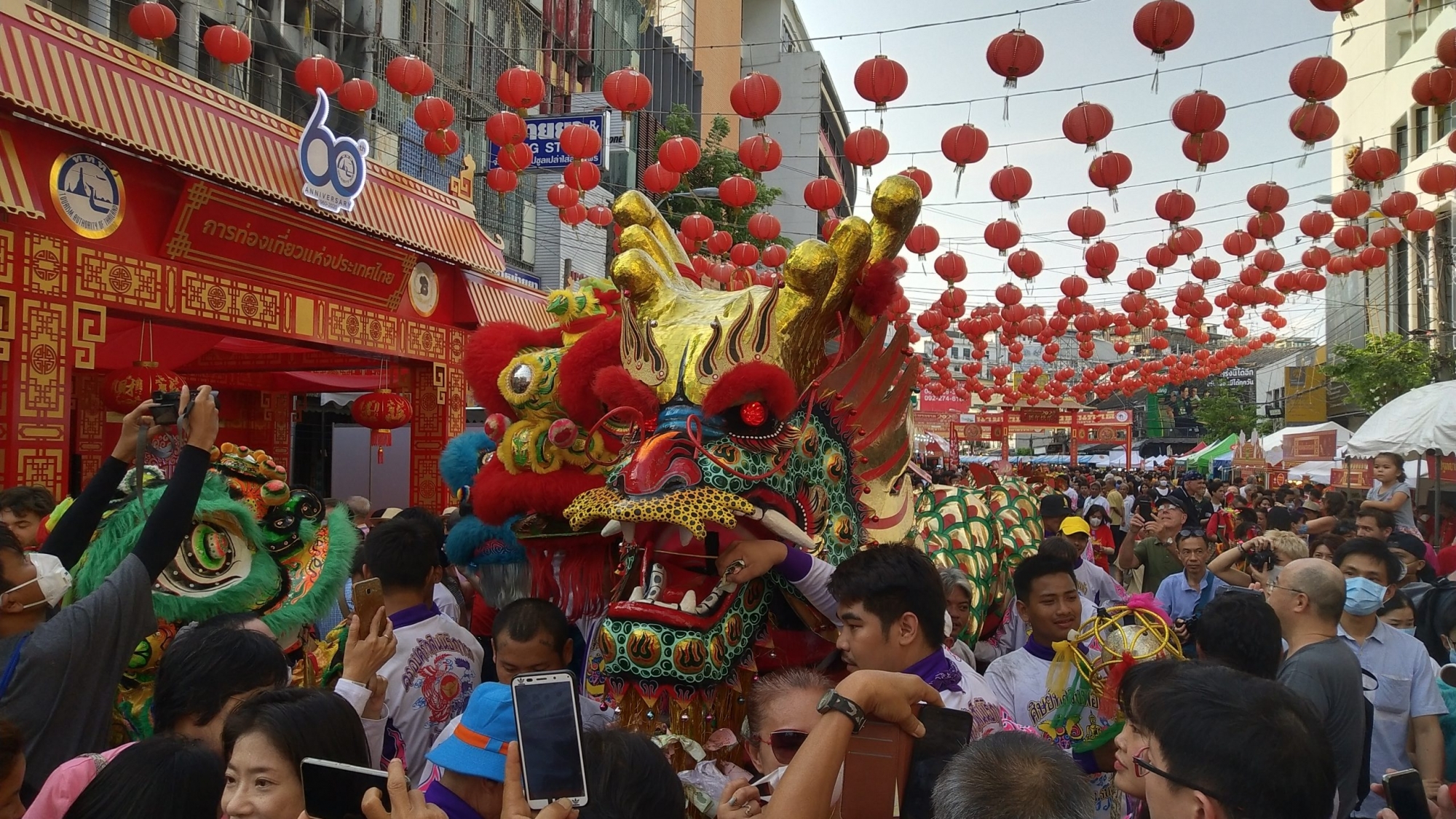The Chinese New Year in Bangkok Chinatown, is the most celebrated festival in the world and mainly due to the mass human migration. Here is an interesting guide about the Chinese New Year in Bangkok, Thailand.
The festival is celebrated in Bangkok during Chinese New Year
Chinese festival that marks the beginning of the New Year according to the Chinese calendar. It is celebrated worldwide across nations with a significant Chinese population
Highlights Of Chinese New Year Celebration In Bangkok, 2020. There are drummers and lion dancers on the streets. Be a part of the street party during the Chinese New Year in Bangkok as the long dragon makes its way to Bangkok Chinatown. Various performances take place throughout the day including acrobat dancers and dragon parades.Chianatown,
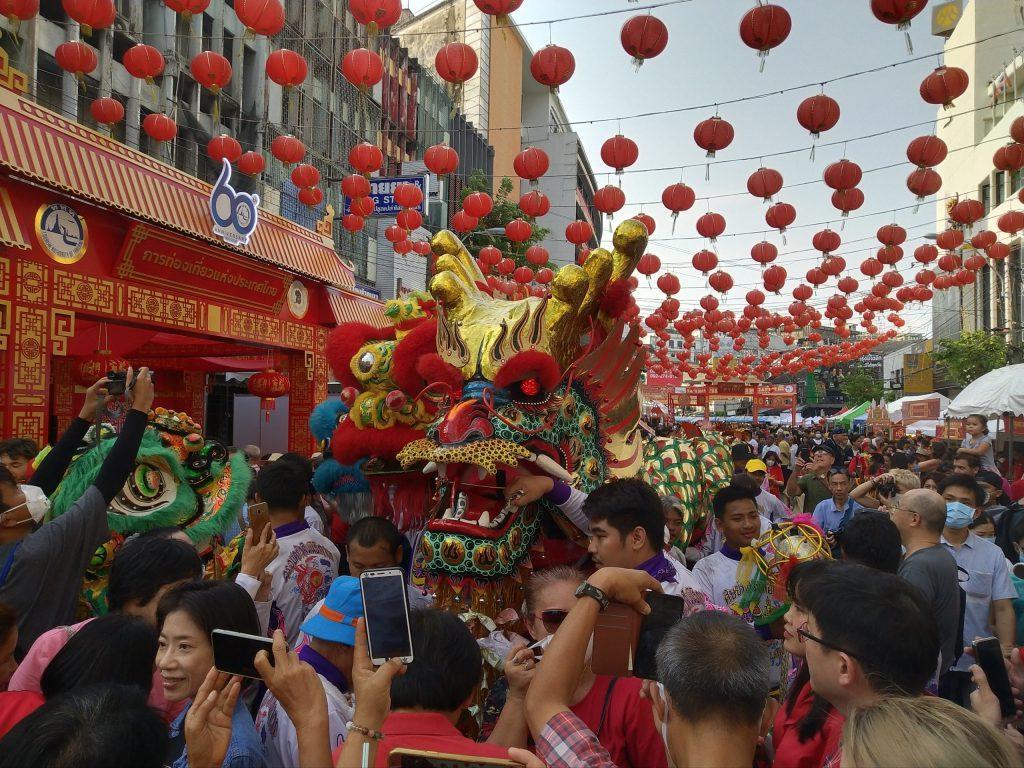
New Year’s Day at Bangkok Chinatown: This is the first day of the new lunar year. It marks the end of the 3 days celebrations of the Chinese New Year. Chinatown is beautifully lit up and music and dance events take place on this day. Other than this area of Bangkok, other Chinese settlements like restaurants and shopping in China, celebrate by giving huge discounts to the people. Lunar New Year in Bangkok is one of the most vibrant and colorful festivals to be celebrated.
Even though Chinese New Year is not an official holiday in Thailand, it is celebrated on a large scale. Yaowaraj, the Chinatown of Bangkok, comes to live with lanterns, banners and colorful processions annually on the eve of Lunar New Year. The whole area turns red with decorations. Dragons and acrobatic dances, crowds of worshipers, and ethnic Chinese people gather to enjoy the street party and feast on Chinese banquets in the area.
Visit Bangkok Chinatown
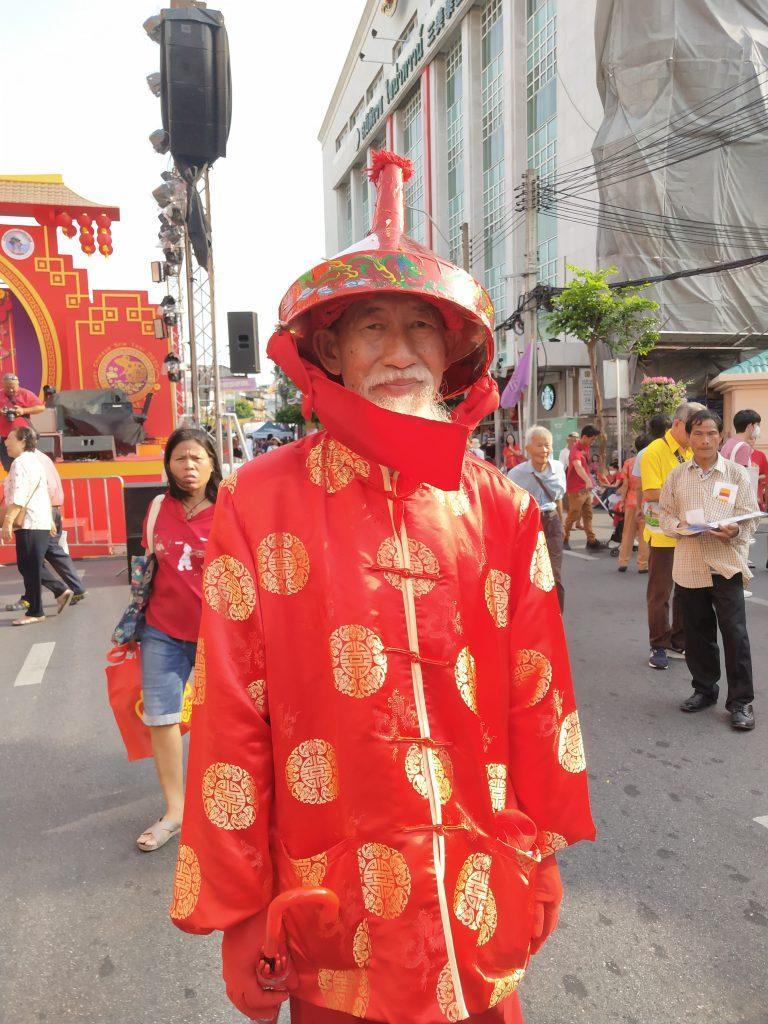
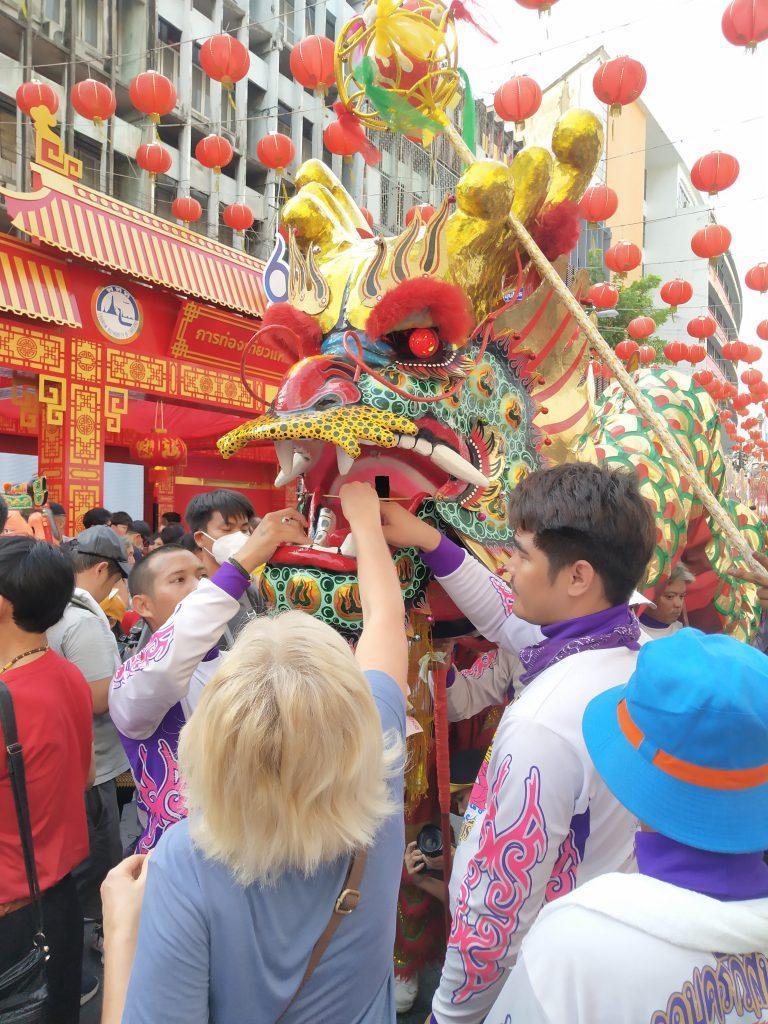
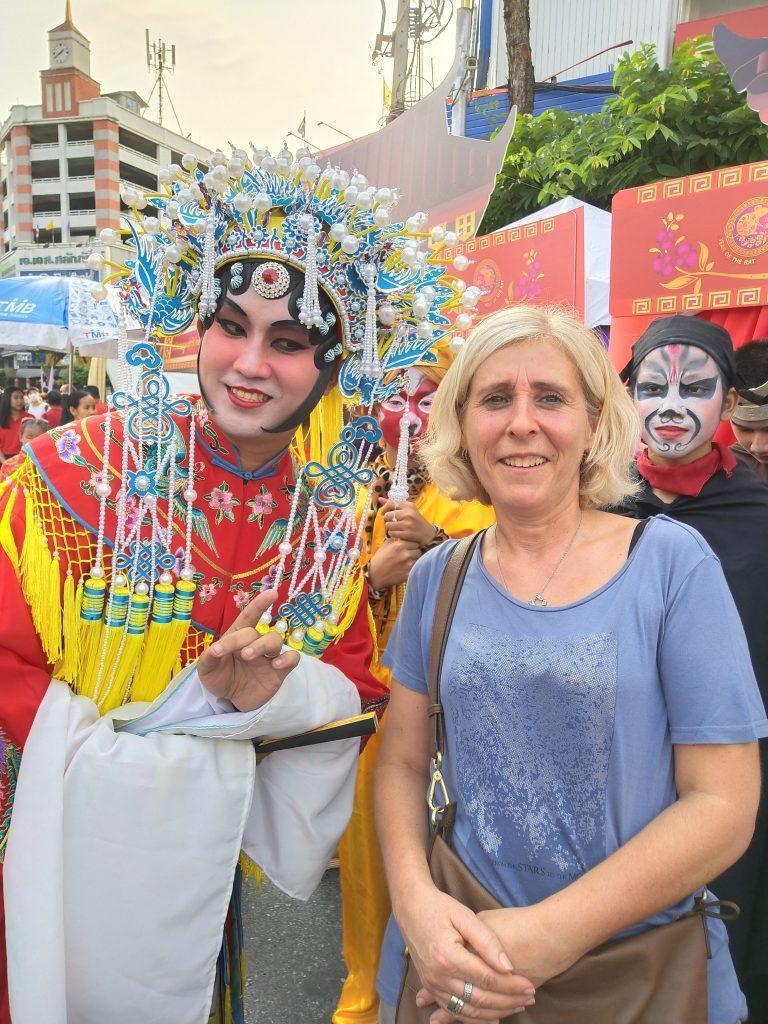
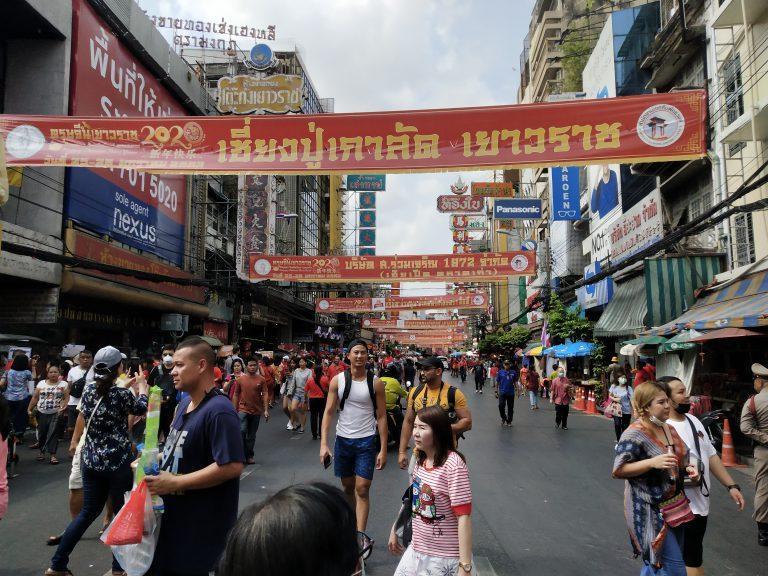
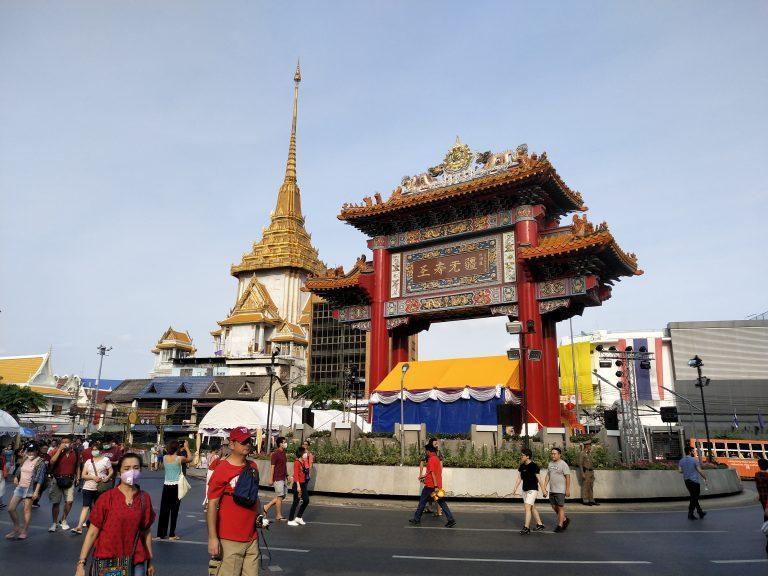
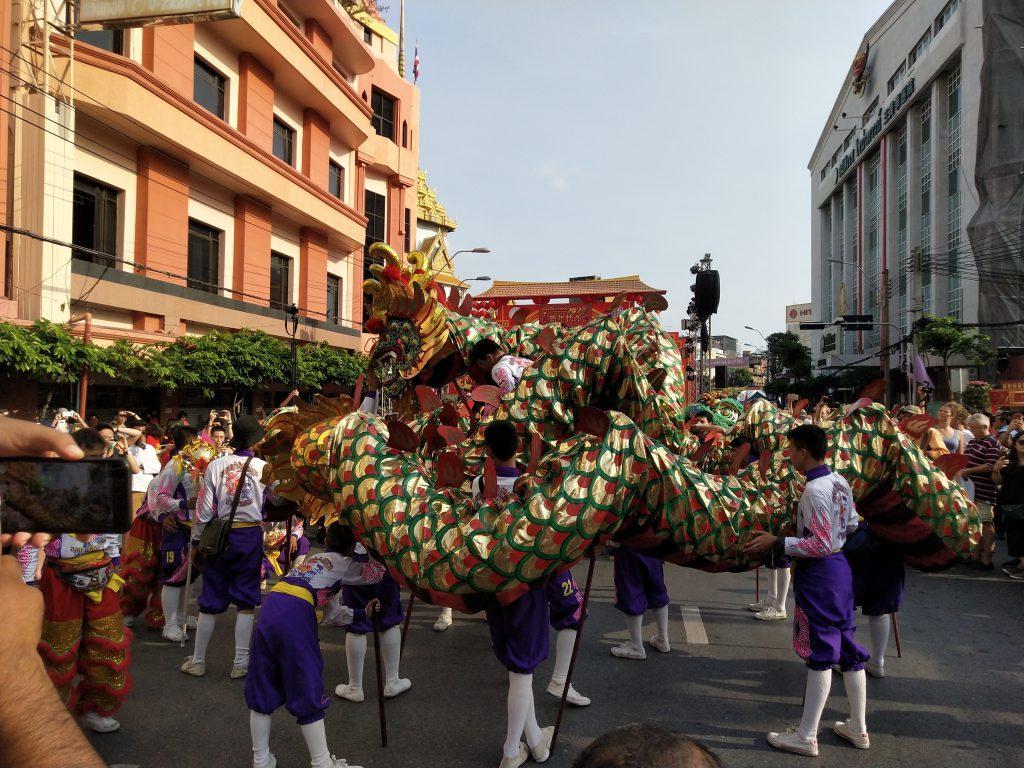
Wat Mangkon Kamalawat (Wat Leng Noei Yi), Bangkok Chinatown
At the heart of Bangkok’s Chinatown is the Chinese-Buddhist temple of Wat Mangkon Kamalawat, known in Chinese as Wat Leng Nui Yee. The temple is the center of festivities during important festivals such as Chinese New Year and the vegetarian festival.
You enter the temple through a passageway off Charoen Krung Road. The temple is a low rambling structure with the requisite dragons playing with a pearl on the roof. Inside you’ll find a labyrinth of courtyards and passages connecting various alters to Buddha as well as Taoist deities. All the while, the smoke of hundreds, perhaps thousands, of sticks of incense fills and swirls about the courtyards.
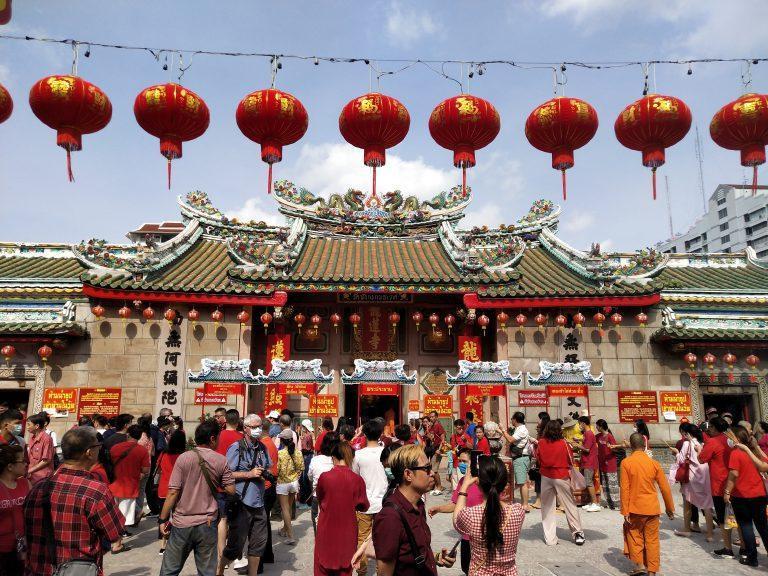
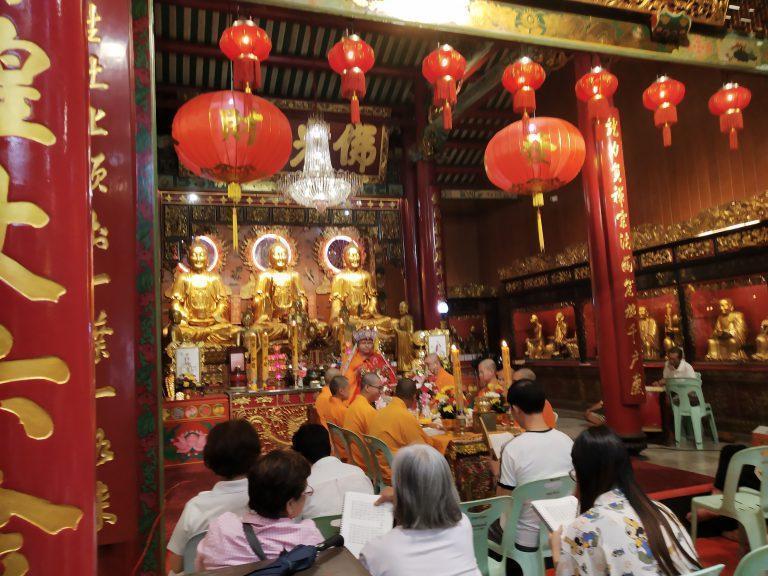
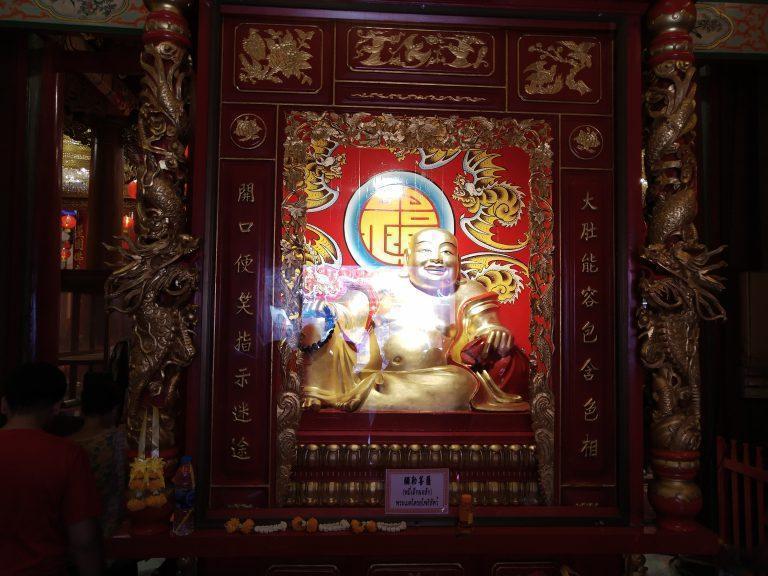
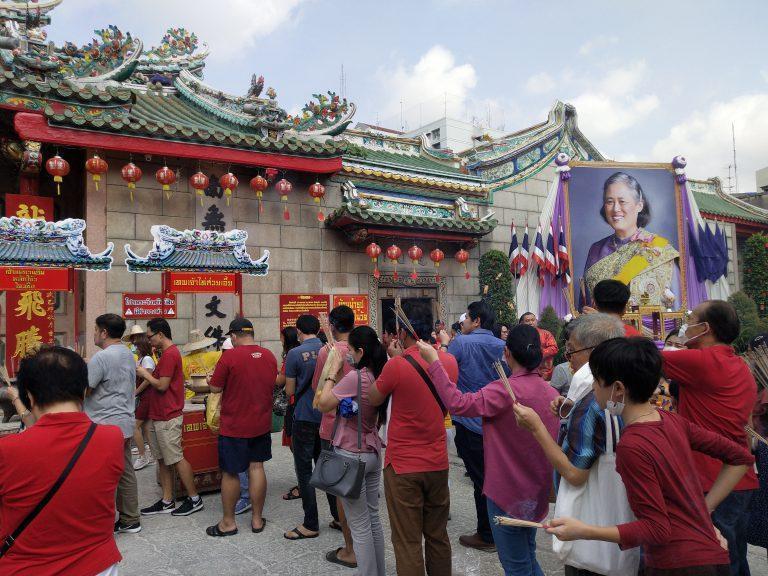
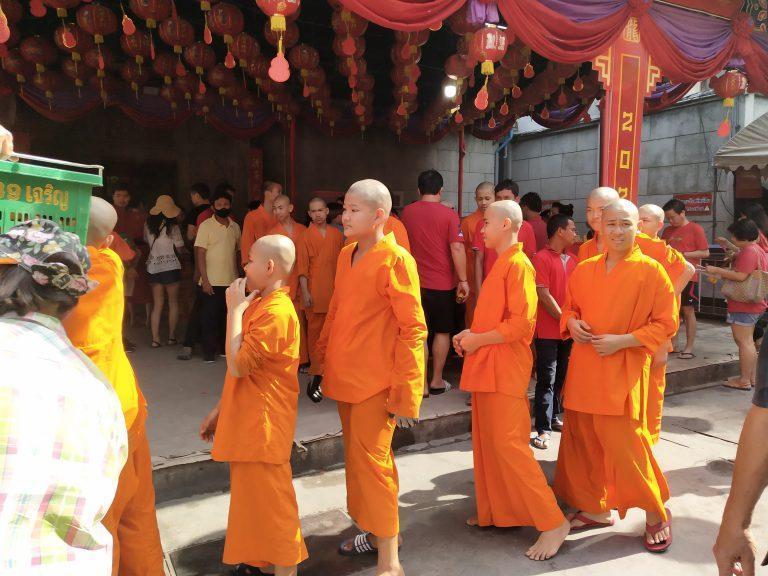
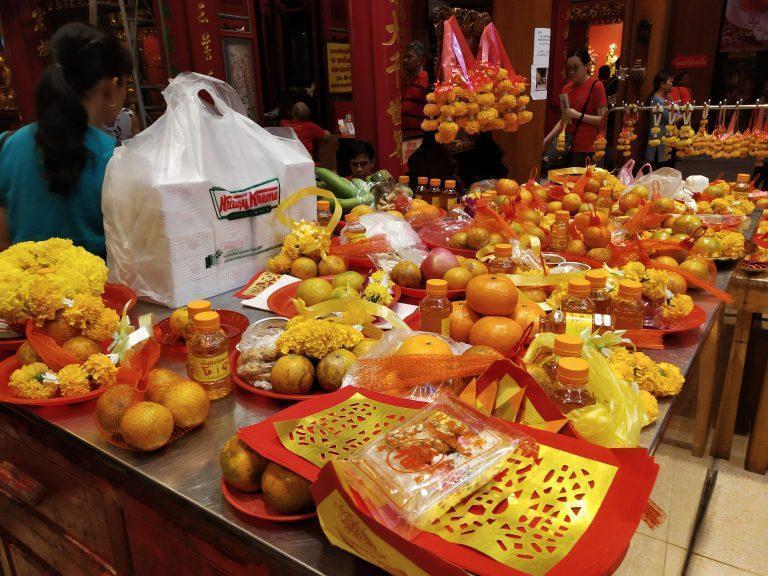
If you make your way back far enough, you’ll find one courtyard with cases full of standing gilded Buddha images on either side.
Outside of the temple building is a place to burn paper offerings for ancestors. Unfortunately, the temple’s forecourt is often filled with parked cars. The best time to see the temple in all it’s glory is during the annual Chinese New Year celebrations when Wat Mangkorn is the center of festivities.
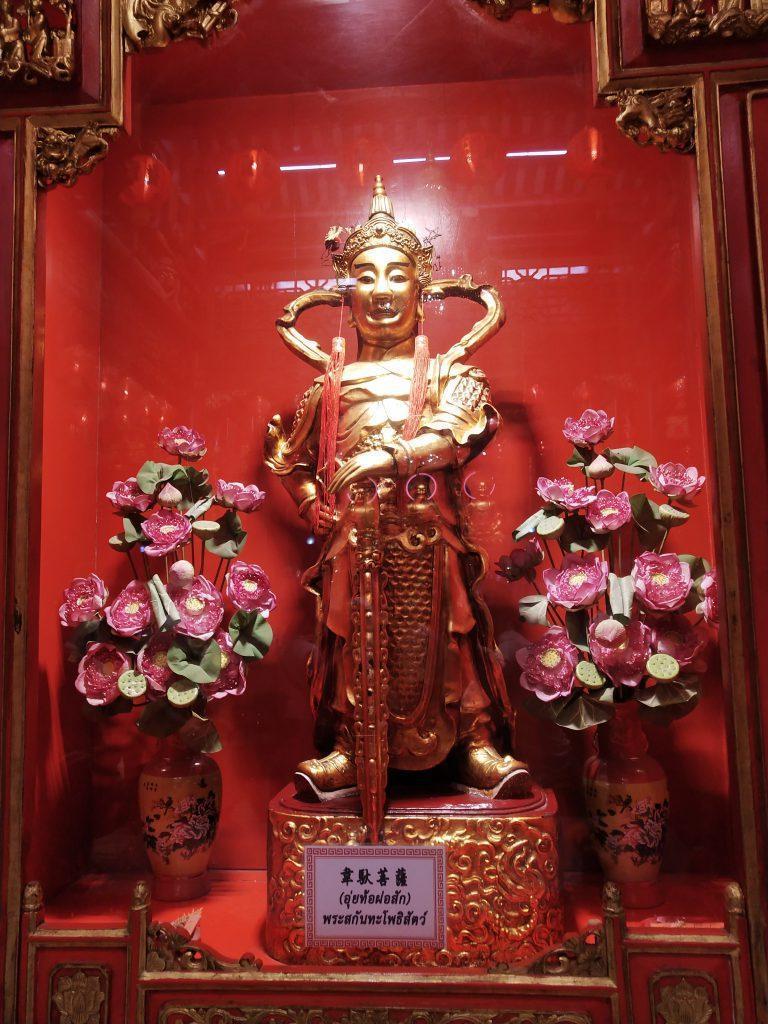
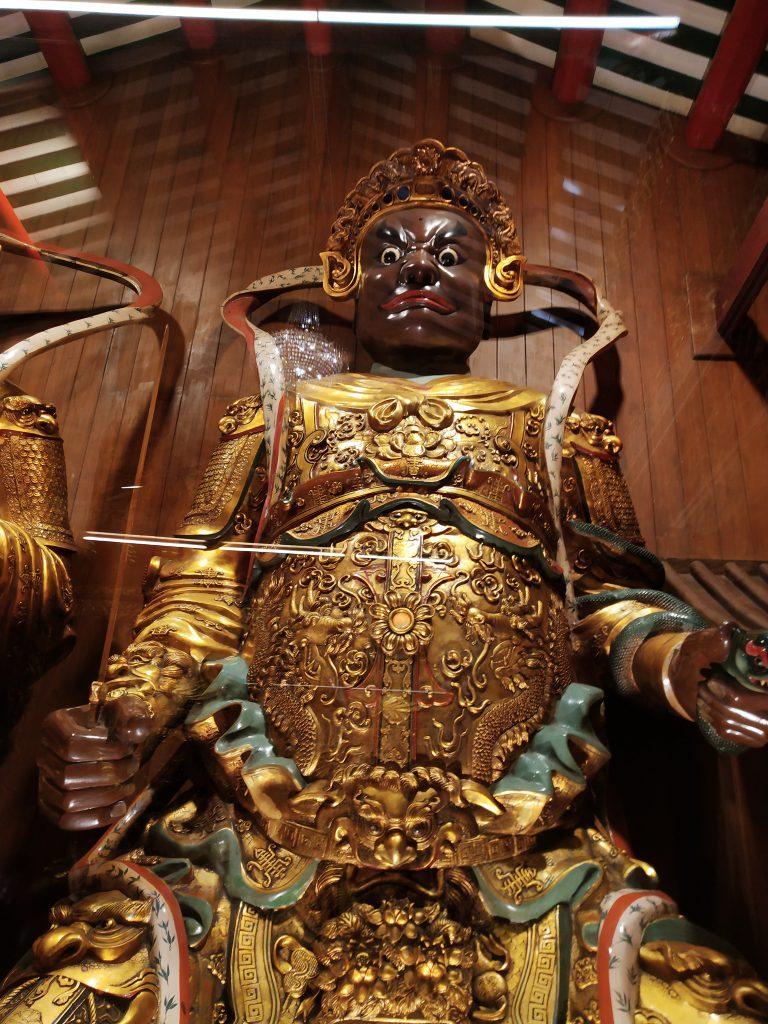
The temple is built in a classic Chinese architectural style, with typical sweeping tiled roofs decorated with animal and floral motifs, including the Chinese dragons. The Ubosot (ordination hall) houses the temple’s main, gold-colored, three Buddha images (present at the center, past at left &right ) in the Chinese style, and are fronted by an altar at which religious rites are performed.
The main entrance is flanked by large statues of the four guardians of the world, the Chatulokkaban, clothed in warrior costumes, two on each side. There is the future Buddha Image in the middle. Around the temple, there are shrines dedicated to a variety of Buddhist, Taoist and Confucian deities and religious figures, all-important in local Chinese beliefs. There are altogether 58 images.
The courtyard in front of the main temple buildings is home to several other shrines, including a furnace for the ritual burning of paper money and other offerings to the devotees’ ancestors.


